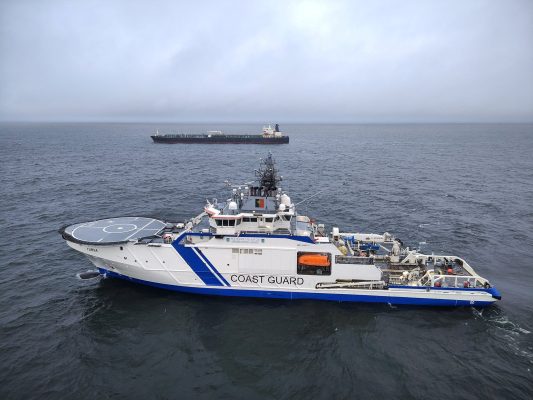When Ukrainian Patriot missile air defenses repeatedly shoot down the Russian Kh-47M2 Kinzhal, a missile the Kremlin describes with Wunderwaffe– (wonder-weapon) like terminology, it is not just saving its military and civilians from the damage the enemy seeks to cause.
It is also doing the hard work for the US and the rest of NATO, their defense industries, and other friendly nations. It provides the ultimate test range.
That’s because Patriots — Ukraine’s only defense against ballistic missiles — and multiple other weapons systems are being trialed against a near-peer rival in real time. For all the improvements in computer modeling, the real battlefield remains unmatchable.
Think of it like baseball, or cricket. Training an air defense system is like throwing balls again and again. Over time, the algorithm learns what the pitcher/bowler can do and works out the best response for the batter. The more balls/missiles are thrown at you, the better you know how to respond. Ukraine has provided knowledge we didn’t have.
All modern Western weapon systems either collect data by default or can be made to. This allows near-realtime improvements and increases the success rate.
For the Patriot, multiple calculations are made to intercept an incoming Kh-47M2 Kinzhal. It’s a tough task. The long-range missile may reach Mach 10 during its flight and is designed to weave an unpredictable course (by comparison, a regular assault rifle bullet leaves the barrel at about Mach 3 but slows down after a few hundred meters.)
The good news is that while the Kremlin likes to call it hypersonic, it has to slow considerably near its target. The Patriot’s job is to calculate when and where its air defense missile should intercept the threat.
Even so, the margins for error are incredibly slim at these velocities, and there is no second chance (The New York Times has a good account here.) Achieving this requires perfection at many levels; that’s why quite a lot of Kinzhals still get through. In addition, Ukraine has only two Patriot systems, which means it cannot provide anything like nationwide coverage.
When the Ukrainians do successfully intercept a Russian missile, the data is fed back into the Patriot missiles intercept algorithm, teaching the air defense system to become better and better over time.
Likewise data on downing modern Russian aircraft; the Patriot system destroyed three advanced SU-34s on December 23, and was again believed to be responsible for the destruction of a Russian command and control aircraft in Southern Ukraine on January 14.
Why is the data so beneficial for NATO and its defense industries? Data quality is high because it is live-tested; it is not a desk job or theoretical calculation. As an added value, other adversaries have copied or bought Russian designs, so data from Ukraine would improve the air defense against Chinese, Iranian, and other rogue state missiles and airplanes.
Intercept success rates are increasingly crucial as the Russian leadership has repeatedly threatened nuclear war if there is a conflict with NATO. It has also threatened to invade and erase the Baltic states and other areas after completing the Ukrainian war.
Remember the Kinzhal missile is designed to carry a tactical nuclear warhead. Shooting them down is an existential issue.
A Russian campaign against the Baltics would be a force-on-force war against NATO.
Let’s say the success intercept rate for the Patriot batteries is 90% without the live data from Ukraine’s successful intercepts and 97% after using it to improve and fine-tune the system.
If Russia launches 20 nuclear-armed Kh-47M2 Kinzhal, then without the Ukrainian data and fine-tuning, two nuclear missiles will penetrate the air defenses and detonate over their NATO targets.
Such advances also create deep uncertainty for Russian generals. In the early 21st century, NATO officers would have viewed a 50%-60% intercept race as a significant success based on data from the Gulf War. Updates since then have increased the system’s effectiveness.
Ukraine’s live testing greatly increases this and creates headaches for our enemies. They will have to ask — will a tactical nuclear strike succeed, and how complete might that success be?
It should therefore be clear that providing Ukraine with Patriots, or any advanced air defense system, is an investment in the provider’s defense. The data offers a high defense return on investment, as the improved algorithm upgrades its existing systems, and the knowledge gained provides an excellent data source for the development of next-generation air defense systems.
The war in Ukraine generates system-borne combat experience for NATO forces because the data is shared, and improves the combat effectiveness and readiness of these friendly units.
All this without a single soldier entering the fight.
Jan Kallberg, Ph.D., LL.M., is a non-resident Senior Fellow with the Transatlantic Defense and Security program at the Center for European Policy Analysis (CEPA), a Fellow at the Army Cyber Institute at West Point, and a George Washington University faculty member. Follow him at cyberdefense.com and @Cyberdefensecom.
Europe’s Edge is CEPA’s online journal covering critical topics on the foreign policy docket across Europe and North America. All opinions are those of the author and do not necessarily represent the position or views of the institutions they represent or the Center for European Policy Analysis.

CEPA at 20
Celebrating 20 Years of Leadership in Action




